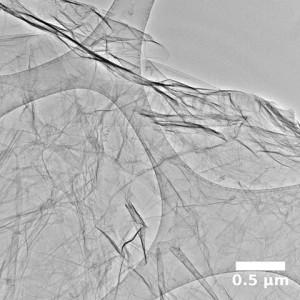New Graphene Research Looks to Kirigami for Inspiration

Kirigami, a form of origami, is an ancient Japanese art that involves cutting paper into complex and intricate designs. Anyone who has folded and snipped paper to create a snowflake design has dabbled in kirigami. Researchers at Cornell University recently experimented with kirigami as well, although they were definitely not creating snowflakes. Instead, they made some intriguing new discoveries with graphene research, which may soon change medicine and nanotechnology in far-reaching ways.
Graphene is a recently discovered microscopic crystalline form of carbon. At a thickness of only one atom, graphene has superior electrical conductivity and flexibility. It has won the attention of researchers who are looking for ways to incorporate it into electronics, energy-saving lighting systems, medical technology, and more.
Beyond Paper Snowflakes
When researchers realized that a sheet of graphene behaved in a fashion very similar to a sheet of paper, able to crumple and bend but not stretch, they imagined ways that graphene could be manipulated into shapes. Based on a paper kirigami model, the scientists cut the graphene into hexagonal shapes to create hinges and springs on an atomic scale.
Graphene, while extremely soft, is also very sticky, so researchers used a liquid similar to soapy water in order to make the micro-scale cuts and create it into the desired shapes.
The hinge, even being only one atom thick, was opened and closed about 10,000 times before warping. Even at full extension, the spring did not lose its conductive properties. These findings have the potential to change the focus and progress of nanotechnology.
 From Nerve Sensors to Nanoscale Robotics
From Nerve Sensors to Nanoscale Robotics
For medical applications there is the potential that a single cell could be monitored with a graphene sensor. If physicians wanted to know if a single neuron in the brain or if a nerve ending on the skin was firing its signal correctly, a graphene sensor would be so tiny and so flexible that, theoretically, its excellent conductive properties would allow it to measure activity of that single cell. This would usher in a new era of personalized medical treatment.
Technologically speaking, the ability to create flexible, nanoscale robots would no longer be the stuff of science fiction. Nanobots, powered by graphene circuits, could be ingested and used to diagnose ailments from an entirely new perspective. Flexible graphene sensors could be incorporated into materials that would serve as the muscle fibers of functioning cybernetic limbs or automatons. Cell phones and smart watches would become obsolete with the ability to install nanoscopic sensors directly into the skin.
Further research is ongoing. The graphene kirigami will have to function outside of a liquid solution to be viable in medical and technological applications. However, the researchers are already looking into attaching graphene to cells in order to test their theories. Even greater experiments and discoveries are sure to come, brought about by the hybridization of science and the ancient art of kirigami.

